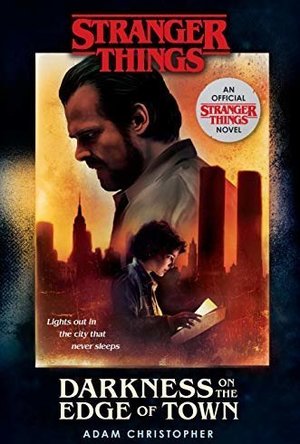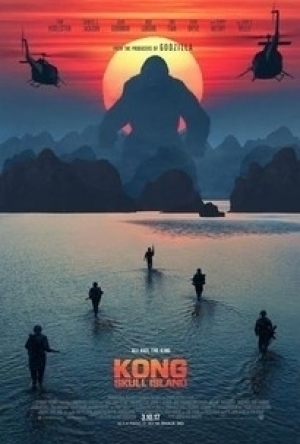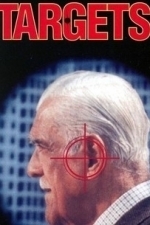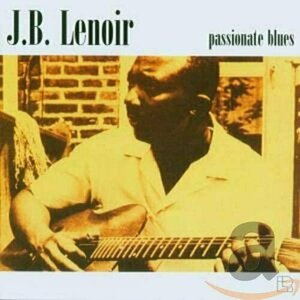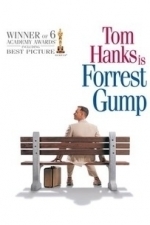
FACEASiT'pro
Health & Fitness and Lifestyle
App
Study, revise and 100% of facial reflexology solutions to be able to design your Dien Chan formulae....

Twilight Struggle
Games
App
The #1 rated strategy board game gets its first expansion! Twilight Struggle: Turn Zero is a new...
BoardGames BoardgameApps Greatgames
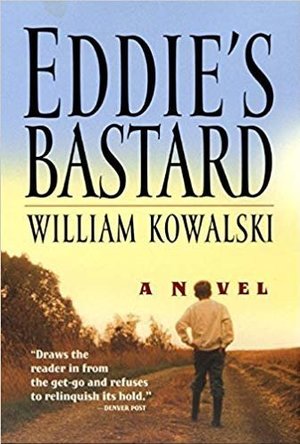
Eddie's Bastard
Book
In this rich, deeply resonant literary debut, twenty-eight-year-old William Kowalski explores the...
fiction literary fiction contemporary American
Hadley (567 KP) rated Stranger Things: Darkness on the Edge of Town in Books
Jul 17, 2019
Adam Christopher is the chosen author to tell Stranger Things' fans about the most important homicide case that Jim Hopper ever worked on in the novel 'Darkness on the Edge of Town.' Fans may recall from season 2, when Eleven found a secret hatch in Hopper's cabin, it revealed boxes under the floor - one which was labeled 'New York.' This is that story.
The entire book is Hopper telling Eleven about his greatest homicide story from New York City. Readers get to meet new characters from Hopper's past, but the most memorable may be his partner in the Homicide Unit, Rosario Delgado (1977 was a time where Homicide Units didn't allow female detectives, and Delgado is one of the first of few that is allowed into the unit). Delgado, who is Cuban, but was raised in Queens, New York, has all the right attitude that wins over her partner, Hopper. The reader will realize that they are two-peas-in-a-pod.
Quickly, the story gets into the first case the two have together: the Zener card serial killer; here, we learn that there were two previous victims, both murdered the same way: stabbed five times with the wounds joining together to form a five-pointed star. Throughout the book, the story goes back and forth between 1977 and the present, where Eleven asks questions about the story, and also, Hopper questioning himself as to whether he should continue to tell Eleven the story.
But soon, we meet a very important man named Leroy Washington - a gang member who wants protection in exchange for the information that he holds- this leads Hopper to our villain: a cult leader who goes by the name Saint John. This villain believes that Satan is going to rise and destroy New York City.
Backtracking a little before, Hopper and Delgado are taken off the case of the Zener card murders, introducing readers to Special Agent Gallup. Gallup states that the third victim, Jacob Hoeler, was also a Special Agent, so the case is turned over to Federal Agents. "What you don't know, Detective, is that Jacob Hoeler is one of ours- - - Special Agent Jacob Hoeler. He was working on assignment, and the fact that he was killed in the course of his duties is of primary concern to my department. Therefore, we need to be sure that a most thorough investigation is carried out. In order to ensure that happens, we will be taking the case in-house. " Hopper, along with Delgado, refuse to let the case go, and secretly continue to work on it. But, as they dig deeper into the evidence and crime scenes, the two realize the murder case is a part of something much bigger - - - a cult that is armed with vehicles and weapons, ready to take over New York City for their leader, Saint John.
Readers get to see the story from both Hopper's and Delgado's point of view, which readers may question how Hopper knows Delgado's side of the story, but quickly to react, Eleven asks this very question for us: " 'Fair point,' said Hopper. 'But we - - - I mean, Delgado and me- - - we pieced it all together afterward. We had to interview everyone we could, and we put it all into a big official report. Actually, it took way longer to write that thing up than we spent on the investigation itself. We were even flown down to D.C. to present it to a bunch of anonymous suits in some federal building. They grilled us pretty well, too, although I ever found out who they all were. ' He grinned. ' Kinda sums the whole thing up, really.' " Even so, without Delgado's point of view, the story wouldn't have turned out as well as it did.
Hopper's obsession with cracking this case lands him in the center of it- - - he is recruited, not by choice, to the task force that is trying to top Saint John's big plan to destroy New York City. Leroy Washington, the informant from before, is Hopper's wing man for the mission, because Washington turns out to be a recruiting officer for the cult. Hopper is to pretend that he is a new recruit, and that he is an ex-cop, who just happened to 'murder' two people the night before. Hopper infiltrating the cult is one of the most exciting parts of the book, but the sequence of these scenes are much too short, leaving this reader disappointed.
Unfortunately, by this time, Delgado has become somewhat of a secondary character. She still works the case, being in the-know of Hopper going undercover, but we see little else of Delgado's character being developed. This is a missed opportunity indeed.
Although I enjoyed Christopher bringing Hopper's backstory to light, the writer is so detail oriented in his writing, that it bogged down much of the flow in the story. The reader is told things in almost every scene that come to nothing, and just seem to waste the reader's time. You may also find that the author uses the same words or physical actions to describe emotions for every single character (such as neck rolling to show stress), which gets old very quickly.
With that said, and only a few inconsistencies here and there, the book was very good. The story takes off pretty quickly and doesn't seem to slow down. The scenery descriptions put the reader right there with our favorite Hawkins Police Chief, Jim Hopper, but the best part about this book is that you don't have to be a Stranger Things' fan to enjoy it; anyone who enjoys Crime Fiction would love this story. Highly recommend!
Gareth von Kallenbach (980 KP) rated Kong: Skull Island (2017) in Movies
Jun 19, 2019
The film is set in 1973 when William Randa (John Goodman), informs the government that they have detected a previously unknown island and need to investigate it before the Soviets learn of it and beat them to whatever the island my hold.
William recruits a team which includes a former British officer named James Conrad (Tom Hiddleston), and Photographer Mason Weaver (Brie Larson), to assist his team lead by Houston Brooks (Corey Hawkins), in mapping the island.
William also asks for a military escort and the government enlists Lt. Colonel Preston Packard (Samuel L. Jackson), and his team to accompany the mission. Packard is trying to find his place in the world as he and his helicopter combat team are dealing with the recent end of the Vietnam War. His men are looking forward to going home and resuming their lives, but a dour Packard jumps at the chance for another mission over the uncertainty of the future.
Upon arriving on the mysterious island and starting their survey mission by using seismic charges, the team attract the attention of Kong who is not at all pleased with the intrusion on his island. Kong makes short work of the copters and the team finds themselves scattered about the dangerous island. They soon learn that Kong is not the only danger on the island and must find a way to rejoin each other and make it to their extraction point alive.
Naturally some of the characters have a hidden agenda and there are dangerous and action around every corner. Further complicating matters is the appearance of Marlow (John C. Reilly), a downed WWII pilot who has been stranded on the island for 23 years and warns of dangers far greater than Kong that are ahead of the team.
The film combines a solid cast with state of the art special effects to take a new twist on the standard adventure fare. While many parts of the film remain silly Popcorn entertainment, the quality of the assembled cast allows the film to move beyond being just an assembly of potential victims for a menagerie of CGI creatures to dispatch.
While the story is more in lines with the linear and thin plots of adventure films of old, the sum of the parts does add up to an enjoyable film experience for those who like the giant creature films. You will want to make sure to stay after the credits as there is a very good scene that shows a setup for a future film that had those in attendance at our press screening cheering.
The film may be a bit intense for younger viewers but if you are looking for a touch of nostalgia and action, you may find the film just what you need.
http://sknr.net/2017/03/08/kong-skull-island/
Matthew Krueger (10051 KP) rated Targets (1968) in Movies
Jun 18, 2020
The plot: After unhinged Vietnam vet Bobby Thompson (Tim O'Kelly) kills his wife and mother, he goes on a brutal shooting spree. Starting at an oil refinery, he evades the police and continues his murderous outing at a drive-in movie theater, where Byron Orlock (Boris Karloff), a retiring horror film icon, is making a promotional appearance. Before long, Orlock, a symbol of fantastical old-fashioned scares, faces off against Thompson, a remorseless psychopath rooted in a harsh modern reality.
Even Karloff's charcter is a retired horror film actor, so he can never get away from the horror genre/type-casting.
In the film's finale at a drive-in theater, Orlok – the old-fashioned, traditional screen monster who always obeyed the rules – confronts the new, realistic, nihilistic late-1960s "monster" in the shape of a clean-cut, unassuming multiple murderer.
Bogdanovich got the chance to make Targets because Boris Karloff owed studio head Roger Corman two days' work. Corman told Bogdanovich he could make any film he liked provided he used Karloff and stayed under budget. In addition, Bogdanovich had to use clips from Corman's Napoleonic-era thriller The Terror in the movie. The clips from The Terror feature Jack Nicholson and Boris Karloff. A brief clip of Howard Hawks' 1931 film The Criminal Code featuring Karloff was also used.
American International Pictures offered to release, but Bogdanovich wanted to try to see if the film could get a deal with a major studio. It was seen by Robert Evans of Paramount who bought it for $150,000, giving Corman an instant profit on the movie before it was even released.
Although the film was written and production photography completed in late 1967, it was released after the assassinations of Martin Luther King and Robert F. Kennedy in early 1968 and thus had some topical relevance to then-current events. Nevertheless, it was not very successful at the box office.
Quentin Tarantino later called it "the most political movie Corman ever made since The Intruder. And forty years later it’s still one of the strongest cries for gun control in American cinema. The film isn’t a thriller with a social commentary buried inside of it (the normal Corman model), it’s a social commentary with a thriller buried inside of it... It was one of the most powerful films of 1968 and one of the greatest directorial debuts of all time. And I believe the best film ever produced by Roger Corman.
Its a excellent mystery suspenseful thrilling starring Boris Karloff, last appearance in a marjor american film, before he passed away in 1968. A great film to end your career on.
Ian Anderson recommended Alabama Blues/Passionate Blues by JB Lenoir in Music (curated)
Olivia Munn recommended Forrest Gump (1994) in Movies (curated)

Currency Converter: Calculator
Travel and Utilities
App
______◢◤ “A TRAVEL ESSENTIAL!” [Free for a limited time only] ◥◣______ Ever wonder how...

Navitel Navigator Kyrgyzstan
Navigation and Travel
App
Navitel Navigator is a precise offline navigation with free geosocial services and detailed map of...
